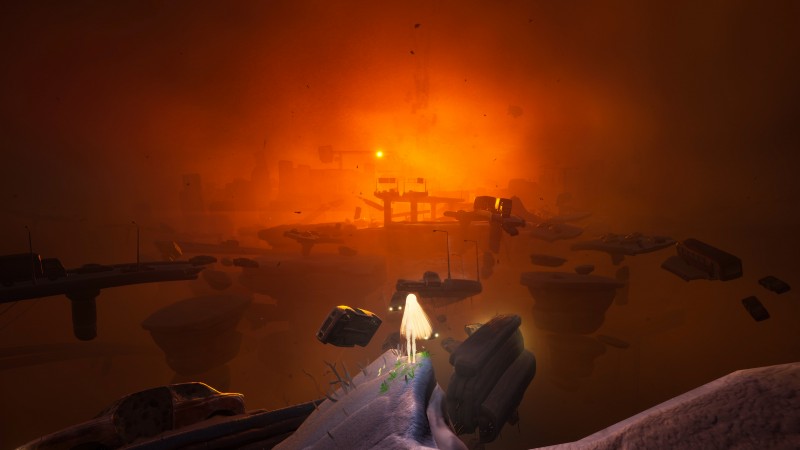As a development team, the members of Piccolo Studio have a clear interest in artistic interactive representations of uncomfortable realities. His previous project, Arise: A Simple Story, was an affecting and powerful portrayal of death and heartbreak. After Us has sweeping ambitions, telling an allegorical story about humanity’s afterlife and our complex and often destructive relationship with nature. The conclusions it makes for the player on those topics are thematically heavy-handed but impactful nonetheless. The traversal-focused adventure that gets you there has moments of brilliance and beauty but some frequent frustrations along the way.
Players control a nymph-like girl who embodies the spirit of Gaia, who travels through a world long left in disrepair by human misadventure. Across an impressive variety of large interconnected stages filled with symbolic representations of nature’s destruction, players leap, run and fly to chase and recover the souls of animals driven to extinction by mankind’s arrogance. Are.
After Us’ most memorable elements are these surreal landscapes, filled with towering monuments to consumerism, piles of garbage, and human statues in agony about what they have wrought. I looked forward to exploring each new destination. As the exploration continues, the discovery of various animal spirits begins to populate each area with ghostly blue impressions of long-dead animals, gloomy and moving in equal measure.
The core gameplay of jumping and fighting back devouring human souls along the way fails to live up to the surrounding visual feast. Leaps and other traversal mechanics are often not precise, causing a lot of feedback because the landings are so floaty and difficult to detect. Rare and rudimentary combats lack even the most basic abilities to lock-on or move laterally, resulting in awkward retreats to gain some distance before sometimes quick turns to deflect an attack . I was eager to push back those moments and get back to exploration.
Most segments feature clever new twists and gimmicks that help keep the action alive. In a ruined landscape, I had to dodge between covered areas before toxic rain rained down on me. In another, I could teleport between abandoned televisions if they were tuned to the same image. Light puzzle solving comes in handy with these new mechanics, but the solutions are rarely involved or complex.
While I was thrilled with each location I visited, each location I uncovered was dragging on too long. After us is a game that could have scaled back significantly in its scope and size, and I would have felt its impact more. As it is, the long stages and vaguely ethereal music occasionally have a mellow effect.
There are some well-meaning but timely questions about our impact on the world after us and its living things. However, optional quests throughout the game reveal that Piccolo is trying to present a slightly more ambivalent take on the subject. Some of them are best left for the player to discover on their own. I strongly recommend After Us as a piece of visual artistry. It’s less successful as an interactive experience, but none of its problems are so obvious that they should prevent one from exploring its striking and haunting world.
